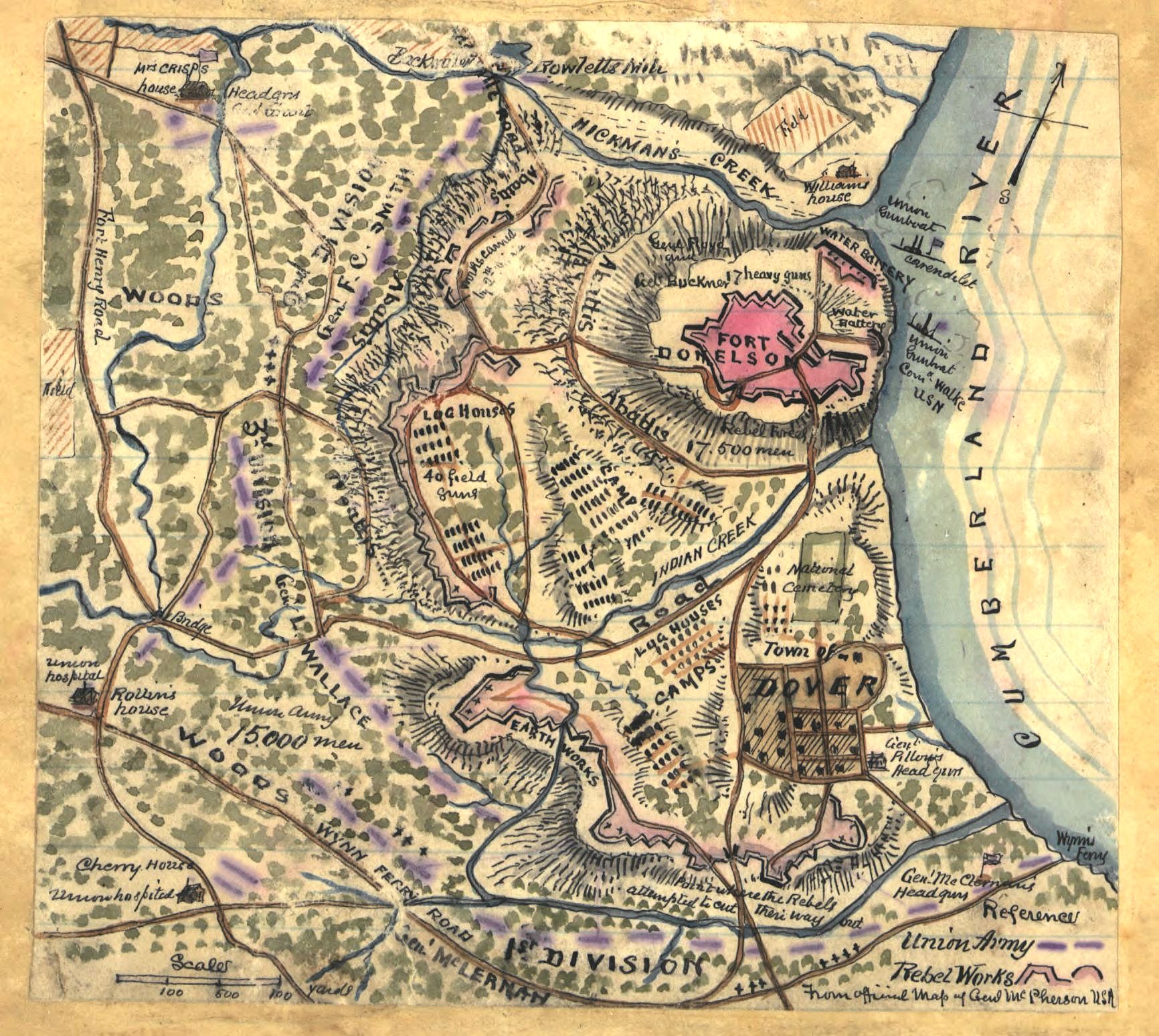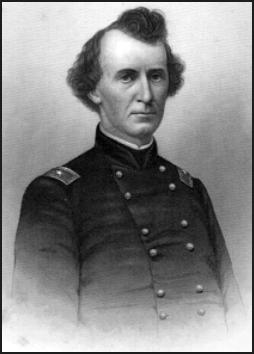|
Mary Ann Brown Newcomb
Mary Ann Brown Newcomb, also known as Mary A. Newcomb (January 5, 1817–December 23, 1892), was a camp and hospital nurse who served the Union Army during the American Civil War. She wrote the book ''Four Years of Work and Personal Experience in the War''. When the war broke out her husband and son enlisted in the Union Army. Newcomb paid for her way to Fort Donelson following the Battle of Fort Donelson (1862). She found that both men had been wounded and she cared for them. She had no experience caring for wounded soldiers, but like other Civil War nurses, Newcomb relinquished her everyday responsibilities to serve as a hard-working nurse. Her husband, First Sergeant Hiram A.W. Newcomb (born July 25, 1811) was wounded on February 15, 1862 and died eleven days later. She provided care for her son, who healed and returned to active service, and her severely wounded husband who wished that she care for "the boys" with the 11th Illinois Infantry Regiment. She ignored the chie ... [...More Info...] [...Related Items...] OR: [Wikipedia] [Google] [Baidu] |
Mary Ann Brown Newcomb
Mary Ann Brown Newcomb, also known as Mary A. Newcomb (January 5, 1817–December 23, 1892), was a camp and hospital nurse who served the Union Army during the American Civil War. She wrote the book ''Four Years of Work and Personal Experience in the War''. When the war broke out her husband and son enlisted in the Union Army. Newcomb paid for her way to Fort Donelson following the Battle of Fort Donelson (1862). She found that both men had been wounded and she cared for them. She had no experience caring for wounded soldiers, but like other Civil War nurses, Newcomb relinquished her everyday responsibilities to serve as a hard-working nurse. Her husband, First Sergeant Hiram A.W. Newcomb (born July 25, 1811) was wounded on February 15, 1862 and died eleven days later. She provided care for her son, who healed and returned to active service, and her severely wounded husband who wished that she care for "the boys" with the 11th Illinois Infantry Regiment. She ignored the chie ... [...More Info...] [...Related Items...] OR: [Wikipedia] [Google] [Baidu] |
Union Army
During the American Civil War, the Union Army, also known as the Federal Army and the Northern Army, referring to the United States Army, was the land force that fought to preserve the Union (American Civil War), Union of the collective U.S. state, states. It proved essential to the preservation of the United States as a working, viable republic. The Union Army was made up of the permanent Regular Army (United States), regular army of the United States, but further fortified, augmented, and strengthened by the many temporary units of dedicated United States Volunteers, volunteers, as well as including those who were drafted in to service as Conscription in the United States, conscripts. To this end, the Union Army fought and ultimately triumphed over the efforts of the Confederate States Army in the American Civil War. Over the course of the war, 2,128,948 men enlisted in the Union Army, including 178,895 United States Colored Troops, colored troops; 25% of the white men who s ... [...More Info...] [...Related Items...] OR: [Wikipedia] [Google] [Baidu] |
American Civil War
The American Civil War (April 12, 1861 – May 26, 1865; also known by other names) was a civil war in the United States. It was fought between the Union ("the North") and the Confederacy ("the South"), the latter formed by states that had seceded. The central cause of the war was the dispute over whether slavery would be permitted to expand into the western territories, leading to more slave states, or be prevented from doing so, which was widely believed would place slavery on a course of ultimate extinction. Decades of political controversy over slavery were brought to a head by the victory in the 1860 U.S. presidential election of Abraham Lincoln, who opposed slavery's expansion into the west. An initial seven southern slave states responded to Lincoln's victory by seceding from the United States and, in 1861, forming the Confederacy. The Confederacy seized U.S. forts and other federal assets within their borders. Led by Confederate President Jefferson Davis, ... [...More Info...] [...Related Items...] OR: [Wikipedia] [Google] [Baidu] |
Fort Donelson
Fort Donelson was a fortress built early in 1862 by the Confederacy during the American Civil War to control the Cumberland River, which led to the heart of Tennessee, and thereby the Confederacy. The fort was named after Confederate general Daniel S. Donelson. The Union Army of the Tennessee, commanded by Major General Ulysses S. Grant, who later became president, captured the fort in February 1862 from the Confederate Army in the Battle of Fort Donelson. This was a great strategic victory for the Union forces, and part of Grant's campaign to gain control of the Mississippi River. Union forces occupied the fort (and much of Tennessee) for the remainder of the war. A small detachment of Confederate troops made one unsuccessful attempt in 1863 to regain it. History Bushrod Johnson of the Confederate Corps of Engineers had approved the build site and supervised construction completed in early 1862. The site commanded a bend on the west side of the Cumberland River, It was planne ... [...More Info...] [...Related Items...] OR: [Wikipedia] [Google] [Baidu] |
Battle Of Fort Donelson
The Battle of Fort Donelson was fought from February 11–16, 1862, in the Western Theater of the American Civil War. The Union capture of the Confederate fort near the Tennessee–Kentucky border opened the Cumberland River, an important avenue for the invasion of the South. The Union's success also elevated Brig. Gen. Ulysses S. Grant from an obscure and largely unproven leader to the rank of major general, and earned him the nickname of "Unconditional Surrender" Grant. Following his capture of Fort Henry on February 6, Grant moved his army (later to become the Union's Army of the Tennessee) overland to Fort Donelson, from February 11 to 13, and conducted several small probing attacks. On February 14, Union gunboats under Flag Officer Andrew H. Foote attempted to reduce the fort with gunfire, but were forced to withdraw after sustaining heavy damage from the fort's water batteries. On February 15, with the fort surrounded, the Confederates, commanded by Brig. Gen. John ... [...More Info...] [...Related Items...] OR: [Wikipedia] [Google] [Baidu] |
11th Illinois Infantry Regiment
The 11th Regiment Illinois Volunteer Infantry was an infantry regiment from Illinois that served in the Union Army during the American Civil War. In April 1861, it was formed as a three-month volunteer unit, and in July 1861 it was reorganized as a three-year unit, in which role it served until the end of the war. Two of its commanding officers were promoted to brigadier general and led major units during the war. In its first major action at Fort Donelson the regiment suffered terrible losses. The 11th Illinois also fought at Shiloh, Riggins Hill, Vicksburg, First Yazoo City, Second Yazoo City, and Fort Blakely. In April 1863, the 109th Illinois Infantry Regiment was disbanded and its enlisted men transferred into the 11th Illinois. The regiment was mustered out of service in July 1865. Three-month unit The original 11th Illinois Infantry Regiment organized at Springfield, Illinois. It was mustered into three-months' service on 30 April 1861 by Captain John Pope. The regi ... [...More Info...] [...Related Items...] OR: [Wikipedia] [Google] [Baidu] |
Cayuga County, New York
Cayuga County is a county in the U.S. state of New York. As of the 2020 census, the population was 76,248. Its county seat and largest city is Auburn. The county was named for the Cayuga people, one of the Indian tribes in the Iroquois Confederation. Cayuga County comprises the Auburn, NY Micropolitan Statistical Area, which is also included in the Syracuse-Auburn, NY Combined Statistical Area. History When counties were established in the Province of New York in 1683, the present Cayuga County was part of Albany County. This was an enormous county, including the northern part of the present state of New York and all of the present state of Vermont and, in theory, extending westward to the Pacific Ocean. This county was reduced in size on July 3, 1766, by the creation of Cumberland County, and further on March 16, 1770, by the creation of Gloucester County, both containing territory now in Vermont. On March 12, 1772, what was left of Albany County was split into three ... [...More Info...] [...Related Items...] OR: [Wikipedia] [Google] [Baidu] |
Effingham, Illinois
Effingham is a city in and the county seat of Effingham County, Illinois, Effingham County, Illinois, United States. It is in South Central Illinois. Its population was 12,252 at the 2020 census. The city is part of the Effingham, IL Micropolitan Statistical Area. The city bills itself as "The Crossroads of Opportunity" because of its location at the intersection of two major Interstate highways: I-57 (IL), I-57 running from Chicago to Sikeston, Missouri, and I-70 (IL), I-70 running from Utah to Maryland. It is also served by U.S. Route 45, which runs from Ontonagon, Michigan to Mobile, Alabama, U.S. Route 40 in Illinois, U.S. Route 40, the historic National Road, which stretches from Atlantic City, New Jersey to Silver Summit, Utah, and Illinois Route 32, Illinois routes 32 and Illinois Route 33, 33 also run through the city. It is also a major railroad junction, the crossing of the Illinois Central main line from Chicago to Memphis with the Pennsylvania Railroad line from India ... [...More Info...] [...Related Items...] OR: [Wikipedia] [Google] [Baidu] |
1817 Births
Events January–March * January 1 – Sailing through the Sandwich Islands, Otto von Kotzebue discovers New Year Island. * January 19 – An army of 5,423 soldiers, led by General José de San Martín, starts crossing the Andes from Argentina, to liberate Chile and then Peru. * January 20 – Ram Mohan Roy and David Hare found Hindu College, Calcutta, offering instructions in Western languages and subjects. * February 12 – Battle of Chacabuco: The Argentine–Chilean patriotic army defeats the Spanish. * March 3 ** President James Madison vetoes John C. Calhoun's Bonus Bill. ** The U.S. Congress passes a law to split the Mississippi Territory, after Mississippi drafts a constitution, creating the Alabama Territory, effective in August. * March 4 – James Monroe is sworn in as the fifth President of the United States. * March 21 – The flag of the Pernambucan Revolt is publicly blessed by the dean of Recife Cathedral, Brazil ... [...More Info...] [...Related Items...] OR: [Wikipedia] [Google] [Baidu] |
1892 Deaths
Year 189 ( CLXXXIX) was a common year starting on Wednesday (link will display the full calendar) of the Julian calendar. At the time, it was known as the Year of the Consulship of Silanus and Silanus (or, less frequently, year 942 ''Ab urbe condita''). The denomination 189 for this year has been used since the early medieval period, when the Anno Domini calendar era became the prevalent method in Europe for naming years. Events By place Roman Empire * Plague (possibly smallpox) kills as many as 2,000 people per day in Rome. Farmers are unable to harvest their crops, and food shortages bring riots in the city. China * Liu Bian succeeds Emperor Ling, as Chinese emperor of the Han Dynasty. * Dong Zhuo has Liu Bian deposed, and installs Emperor Xian as emperor. * Two thousand eunuchs in the palace are slaughtered in a violent purge in Luoyang, the capital of Han. By topic Arts and sciences * Galen publishes his ''"Treatise on the various temperaments"'' (aka ''O ... [...More Info...] [...Related Items...] OR: [Wikipedia] [Google] [Baidu] |
American Civil War Nurses
American(s) may refer to: * American, something of, from, or related to the United States of America, commonly known as the "United States" or "America" ** Americans, citizens and nationals of the United States of America ** American ancestry, people who self-identify their ancestry as "American" ** American English, the set of varieties of the English language native to the United States ** Native Americans in the United States, indigenous peoples of the United States * American, something of, from, or related to the Americas, also known as "America" ** Indigenous peoples of the Americas * American (word), for analysis and history of the meanings in various contexts Organizations * American Airlines, U.S.-based airline headquartered in Fort Worth, Texas * American Athletic Conference, an American college athletic conference * American Recordings (record label), a record label previously known as Def American * American University, in Washington, D.C. Sports teams Soccer * Ba ... [...More Info...] [...Related Items...] OR: [Wikipedia] [Google] [Baidu] |







